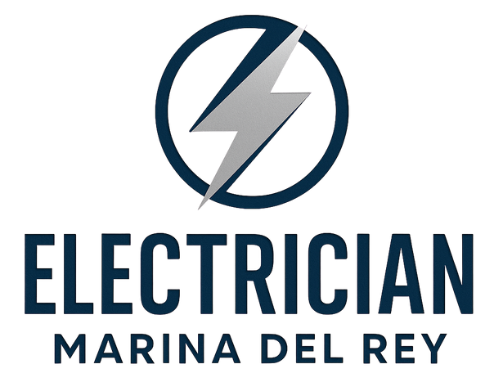Electricity keeps your home comfortable and connected, but hidden faults can turn everyday convenience into risk. Because many electrical issues develop quietly behind walls, ceilings, and service panels, it pays to know the subtle clues that something isn’t right. This guide walks you through practical ways to identify warning signs early, prioritize fixes, and decide when to call a licensed electrician so you can keep your home safe, efficient, and code-compliant.
Start with Your Senses: Smell, Sight, Sound, and Touch
Smell: A persistent “hot” or fishy odor near outlets, switches, or appliances may indicate overheated insulation or failing components. If the smell intensifies when a device runs, unplug it and investigate.
Sight: Look for discoloration, melted plastic, scorch marks, or soot on outlets, plugs, or light fixtures. Flickering lights, especially when other appliances turn on, can signal voltage drop or loose connections.
Sound: Buzzing, crackling, or sizzling from switches, fixtures, or the service panel points to arcing (electricity jumping across a gap). Address this urgently – arcing can ignite nearby materials.
Touch: Outlets, switches, or cords that feel warm (not just slightly above room temperature) or vibrate are red flags. Heat often means excessive current, poor contact, or internal damage.
Common Hidden Hazards (and What They Mean)
1) Frequent Breaker Trips or Fuse Blows
Breakers are designed to trip when circuits are overloaded or shorted. If the same breaker trips repeatedly, you might have too many loads on one circuit, a failing breaker, or a wiring fault. Avoid repeated resets without finding the cause.
2) Loose or Worn Receptacles and Switches
Plugs that fall out, wiggle excessively, or crackle when moved can overheat. Loose “stab-in” or backwired connections behind devices are a frequent culprit. Upgrading to securely side-wired devices or having an electrician reterminate connections can eliminate hidden heat points.
3) Overreliance on Extension Cords and Power Strips
If cords snake across rooms or power strips are daisy-chained, your home likely lacks adequate outlets or dedicated circuits. Extension cords are for temporary use; long-term reliance can mask load problems and create tripping and fire hazards.
4) Ungrounded or Two-Prong Outlets
Two-slot receptacles indicate older wiring that may lack an equipment ground. Without a ground path, surge protection is compromised and shock risk is higher. Consider upgrading to grounded circuits or installing GFCI protection (properly labeled) as an interim safety measure where allowed by code.
5) Aluminum Branch Wiring (Older Homes)
Some homes built in the late 1960s–1970s used aluminum conductors on 15/20A circuits. Aluminum expands and contracts more than copper and can loosen over time, increasing the risk of arcing and overheating. Special connectors and antioxidant compounds or a professional retrofit are required for safety.
6) DIY Splices and Hidden Junctions
Non-professional work often leaves splices outside junction boxes, concealed behind drywall, or taped instead of using proper wire connectors. Open splices can overheat and arc. Any splice must be inside an accessible junction box with a cover.
7) Old or Damaged Service Equipment
Rust in the panel, missing knockouts, double-tapped breakers (two conductors on a breaker not rated for it), or non-listed breakers are serious issues. Heat discoloration around breakers or a panel hot to the touch is an urgent sign to call a pro.
Room-by-Room Clues to Watch
Kitchen
Countertop outlets without GFCI protection near sinks.
Microwave, toaster oven, and coffee maker sharing one circuit (frequent trips).
Warm faceplates or a burnt smell when multiple appliances run.
Bathroom and Laundry
Missing or non-functional GFCI protection by sinks, tubs, and washers.
Outlets or switches with condensation, corrosion, or cracking plates.
Dryer tripping breakers or long dry times caused by voltage drop or shared circuits.
Living Areas and Bedrooms
Flickering when a heater or vacuum turns on, indicating a weak connection.
Lamps that dim unpredictably; buzzing dimmers paired with wrong bulb types.
Under-the-rug cords or overloaded surge strips behind entertainment centers.
Garage, Basement, and Outdoors
Non-weather-resistant outlets outdoors or missing in-use (bubble) covers.
Extension cords powering permanent tools or freezers (install dedicated circuits instead).
Moisture near outlets, rusted boxes, or corroded ground clamps on water pipes/rods.
Simple Home Tests (No Special Tools)
GFCI Test: Press TEST; power should cut. Press RESET to restore. Do this monthly in kitchens, baths, laundry, garage, outdoor areas.
Outlet Stability: Plug in a lamp; gently wiggle the plug. Flicker or crackle suggests a loose receptacle or terminal.
Heat Check: After using high-draw devices (space heater, hair dryer), lightly touch the outlet plate. It should not feel hot.
Load Awareness: If a breaker trips when multiple appliances run, redistribute loads or plan for a dedicated circuit.
Handy Tools for Deeper Screening (DIY-Friendly)
Non-contact voltage tester: Confirms power is off before you touch devices; detects live conductors.
Plug-in outlet tester: Flags open ground, reversed polarity, and other basic wiring errors.
Thermal (IR) thermometer or camera: Helps spot unusually warm outlets, cords, or breakers that merit professional inspection.
Special Watchouts
Homes with Kids and Pets
Use tamper-resistant receptacles or sliding covers to block curious fingers.
Secure cords with channels; avoid floor-crossing cords and visible power strips in play areas.
Older Buildings and Renovations
Mixed wiring methods, open junctions, or abandoned knob-and-tube can hide behind finishes.
Renovated spaces sometimes overload original circuits – verify that added rooms have adequate capacity.
Seasonal and Use-Pattern Red Flags
Winter: Space heaters cause trips, warm cords, or scorched outlets – signs the circuit is undersized or connections are loose.
Holidays: Multiple light strings into a single strip, or daisy-chained strips, indicate overload risk.
Summer: Window AC units on shared circuits dim lights or trip breakers – consider a dedicated circuit.
What You Can Fix vs. When to Call a Pro
Generally Safe DIY Tasks
Replacing cracked faceplates and securing loose receptacle mounting screws (power off first).
Adding cord channels, relocating power strips off the floor, labeling breakers for clarity.
Testing GFCIs monthly and replacing worn power strips and damaged cords.
Call a Licensed Electrician For
Repeated breaker trips, buzzing panels, or any hint of arcing.
Warm outlets/switches, visible scorch marks, or burning odors.
Upgrading two-prong outlets, adding new circuits, or installing GFCI/AFCI protection.
Aluminum branch wiring, knob-and-tube, or suspected undersized/obsolete service equipment.
Emergency Steps if You Suspect an Active Hazard
Unplug and power down: Turn off and unplug the suspect device. If necessary, switch off the circuit breaker that feeds the area.
Do not use water: Never use water on an electrical fire. If safe to do so, use a Class C (or ABC) fire extinguisher.
Evacuate and call for help: If burning smell or smoke persists, leave the home and contact emergency services.
Schedule inspection: Arrange a prompt evaluation by a licensed electrician before restoring normal use.
Preventive Measures that Eliminate Hidden Risks
GFCI protection in kitchens, bathrooms, laundry, garage, exterior locations; AFCI in living/bedroom areas where required or recommended.
Tamper-resistant outlets in homes with children or rentals to reduce shock risk.
Dedicated circuits for heavy loads (microwave, dishwasher, disposal, laundry, space heating, AC).
Annual or biennial electrical checkup: torque checks on terminals, inspection for corrosion/moisture, and thermal scanning of panels and major connections.
Final Checklist: Quick Scan of Your Home
No scorch marks, buzzing, or heat at outlets, switches, or the panel.
GFCIs present and tested where water is nearby; AFCI protection where advised.
No daisy-chained strips; extension cords used only temporarily.
Grounded (three-prong) outlets or code-approved alternatives properly labeled.
All splices inside covered junction boxes; no exposed wiring.
Labels on the service panel are accurate and readable.
Hidden electrical hazards often whisper before they shout. By learning to recognize early warning signs – heat, odor, flicker, noise, and repeated trips – you can act before small faults become major failures. Combine routine checks with smart upgrades like GFCI/AFCI protection and dedicated circuits, and partner with a licensed electrician for anything beyond basic maintenance. The payoff is a safer, more reliable home – and lasting peace of mind every time you flip a switch.

